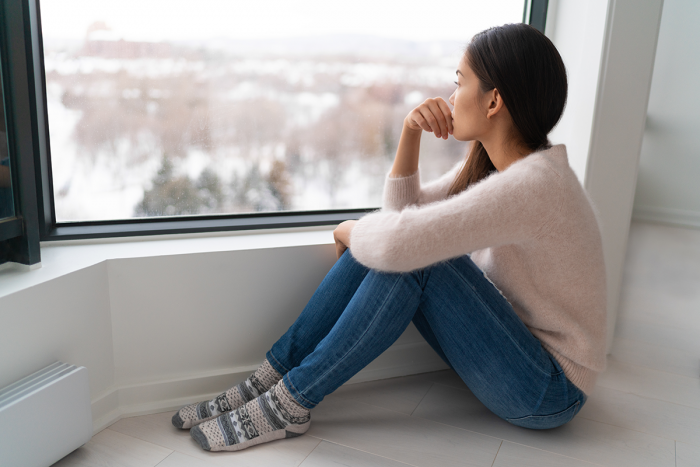Between family parties and braving shopping malls, the holidays are often a hectic time of the year. For most, it is a good sort of hectic, filled with smiles and happy memories. For others, however, the holidays are a hard time, filled with anxiety and tears. For many, who suffer from depression, anxiety, PTSD, or grief, these feelings occur all the time. For others, however, these blues occur in the winter. Seasonal Affective Disorder, or SAD, is a well-recognized disorder that affects millions each year. While there is still no cure, effective treatments can help sufferers of Seasonal Affective Disorder continue living in spite of the disorder.
The first question to ask is “Do I have Seasonal Affective Disorder?” To answer this, you must first take an inventory of symptoms. In patients with SAD, symptoms begin in late October or early November and end in late March or early April. Other symptoms of SAD include cravings for carbohydrate-rich foods like potato chips or sweets, increased appetite, low energy level, increased need for sleep, inability to concentrate, and low sex-drive.
Once that is done, if you do feel you have SAD, you need to make an appointment with a mental health provider who is knowledgeable in the treatment of SAD. Blood work is usually done at the first visit to rule out any disorders that present in a similar manner. Because SAD is caused by a lack of serotonin, anti-depressants, such as Zoloft or Celexa, are sometimes prescribed as well.
Continuing to build a relationship with your provider can prove helpful in many other ways. These professionals are able to monitor progress better, provide encouragement, and recommend alternative treatments. Medications also need to be monitored and adjusted over time.
Getting an appropriate amount of sleep is also helpful. Try to get to bed at roughly the same time every night and wake at the same time. Limit the number of other activities you do in bed.
Serotonin levels can be increased by a change in diet. Ensuring that the diet contains plenty of protein and ample, but not too many carbohydrates is important. Turkey and other foods containing tryptophan can help with serotonin production as can nuts, fatty fish, and foods rich in magnesium and vitamin B-6. For vegetarians, bananas and avocados are also rich in tryptophan.
Exercise is another way to ensure appropriate serotonin production. Unfortunately, the winter often makes this difficult. Yoga and other stretching exercises have been shown to reduce stress and increase mood. These activities can also be done indoors. Getting a gym membership or indoor pool pass is another effective way to exercise during winter months.
If it is feasible, hiring a personal trainer can be helpful because it builds motivation and provides a reason to stick with the workout routine. A trainer also provides their client with a workout that is challenging. They also continue to build the challenge as time goes on.
Even though it is cold it is a good idea to get outside. If the roads are clearly taking a short walk. If it is snowy, build a snowman or snow angels. Have a snowball fight. Chances are good, this will also make you laugh, further raising serotonin levels.
Some people also plan a winter get-away. Visiting a sunny spot can help rebuild serotonin stores. Try to plan this trip for midway through the affected period.
Many people with SAD find light therapy to be the single most effective treatment. A physician needs to prescribe this therapy as it is not for everyone. Persons with photosensitivity, including those taking psoriasis medications, certain antibiotics, and other medications that cause sensitivity to light, should never use light therapy. Diabetics should also be cautious due to their increased risk for macular degeneration.
Light therapy uses a full-spectrum, high-intensity light bulb with the power of 20 or more common light bulbs. It is placed above the line of vision. The patient uses it for up to an hour, often in the morning. Relief should begin immediately.
The final tip, which is good advice for everyone who is suffering during the holidays, is to keep up routines and traditions. Even if you don’t feel like it, you should visit family and friends. Attend church, go to the theater, and bake cookies with the kids. Doing these things will take your mind off the disorder and also help build memories for the future.
Unfortunately, there is no one size fits all treatment. Each patient and their doctor must work to find the perfect blend of therapies. With some trial and error, a blend of diet and exercise, plus medications and light therapy, can bring relief. Travelling can also help refill the serotonin tanks. It is also important to remember that the spring will come and with it, relief.











Read 0 comments and reply